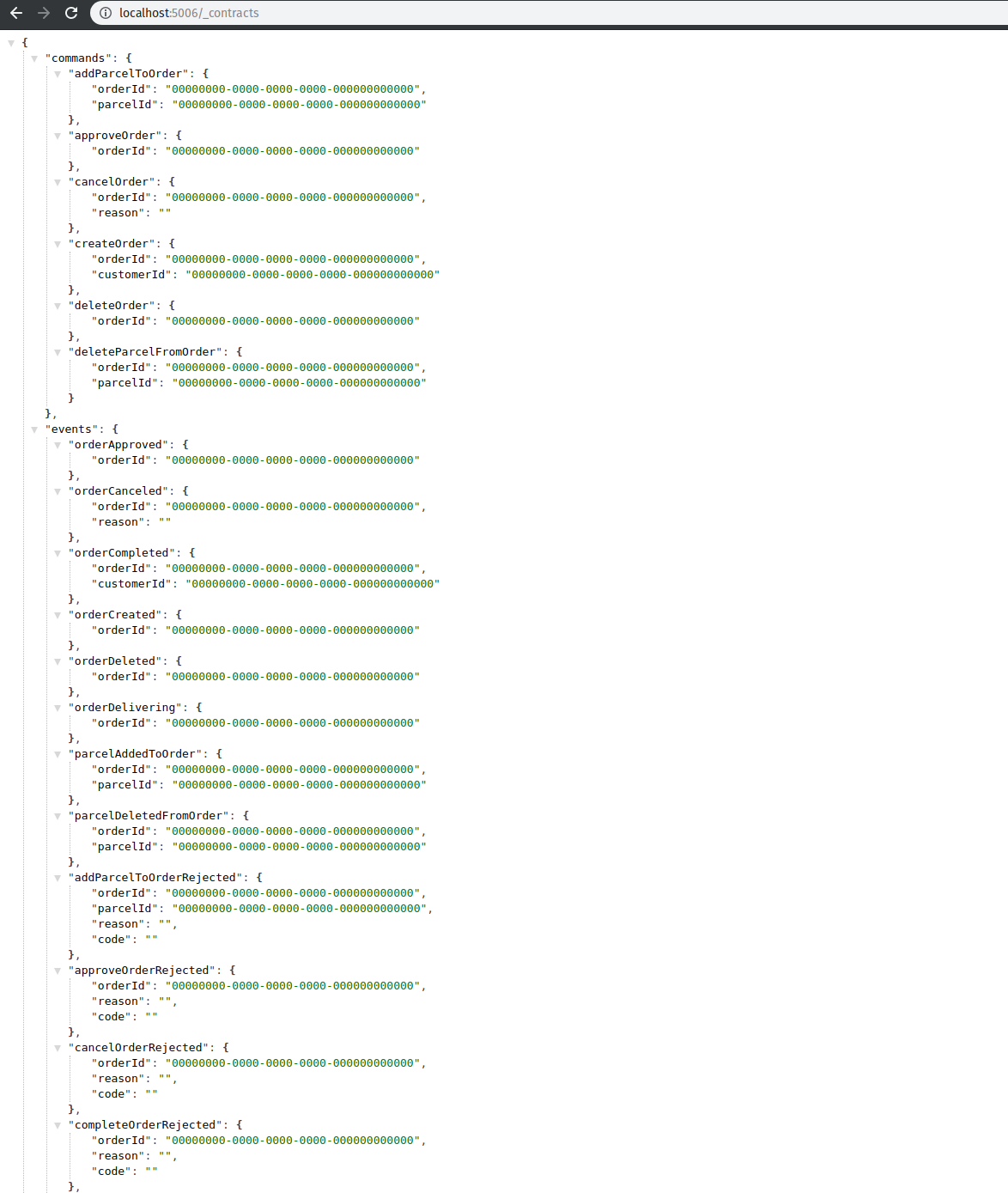Endpoints
With the usage of Web API package, you can define the endpoints more fluently, without the need of using a full ASP.NET Core MVC package and deriving from Controller. It’s more of an extension of the built-in IRouteBuilder abstraction allowing to define routing and deal with HTTP requests.
Installation
dotnet add package Convey.WebApi
Dependencies
Usage
Extend Program.cs -> CreateDefaultBuilder() with AddWebApi() that will add the required services.
public static IWebHostBuilder GetWebHostBuilder(string[] args)
=> WebHost.CreateDefaultBuilder(args)
.ConfigureServices(services => services
.AddConvey()
.AddWebApi()
.Build())
To define custom endpoints, invoke UseEndpoints() as the IApplicationBuilder extension within Configure() method. Then, you can make use of Get(), Post(), Put(), Delete() methods.
public static IWebHostBuilder GetWebHostBuilder(string[] args)
=> WebHost.CreateDefaultBuilder(args)
.ConfigureServices(services => services
.AddConvey()
.AddWebApi()
.Build())
.Configure(app => app
.UseEndpoints(endpoints => endpoints
.Get("", ctx => ctx.Response.WriteAsync("Hello"))
.Get<GetParcel, ParcelDto>("parcels/{parcelId}")
.Get<GetParcels, IEnumerable<ParcelDto>>("parcels")
.Delete<DeleteParcel>("parcels/{parcelId}")
.Post<AddParcel>("parcels", (req, ctx) => ctx.Response.Created($"parcels/{req.ParcelId}"))))
As you can see, generic extensions can be used when defining the endpoints (although it’s not required). Whenever you define a generic endpoint with a type T, it will bind the incoming request to the new instance of T (think of it as something similar to command).
To automatically handle the incoming request, you can implement IRequest marker interface for type T and create an IRequestHandler<T> that will be invoked automatically.
public class DeleteParcel : IRequest
{
public Guid ParcelId { get; }
public DeleteParcel(Guid parcelId)
{
ParcelId = parcelId;
}
}
public class DeleteParcelHandler : IRequestHandler<DeleteParcel, int>
{
public async Task<int> HandleAsync(DeleteParcel request)
{
// Deleted a parcel, let's return its ID.
return request.ParcelId;
}
}
CQRS Integration
To seamlessly integrate with command and query handlers that can be invoked either by internal HTTP API call or a message broker (just make sure that you don’t process queries asynchronously, as it doesn’t make much sense), CQRS integration with Web API has to be installed.
Installation
dotnet add package Convey.WebApi.CQRS
Dependencies
Usage
Ensure that Web API extension is already registered, and change UseEndpoints() to UseDispatcherEndpoints(). When defining your endpoints, you will notice that now there are 2 additional (and optional) parameters - beforeDispatch and afterDispatch that can be used to alter or enrich the behavior of commands or queries before or after they will be invoked by dispatcher.
public static IWebHostBuilder GetWebHostBuilder(string[] args)
=> WebHost.CreateDefaultBuilder(args)
.ConfigureServices(services => services
.AddConvey()
.AddWebApi()
.Build())
.Configure(app => app
.UseDispatcherEndpoints(endpoints => endpoints
.Get("", ctx => ctx.Response.WriteAsync("Hello"))
.Get<GetParcel, ParcelDto>("parcels/{parcelId}")
.Get<GetParcels, IEnumerable<ParcelDto>>("parcels")
.Delete<DeleteParcel>("parcels/{parcelId}")
.Post<AddParcel>("parcels",
afterDispatch: (cmd, ctx) => ctx.Response.Created($"parcels/{cmd.ParcelId}"))))
To expose all of the commands and events as a sort of auto-documentation (might be helpful for integration with other services) (similarly to what Swagger does) under a custom endpoint (by default: _contracts) returning an array of commands and events objects using JSON format, invoke UsePublicContracts<T>() extension, where T can be a so-called marker attribute used to expose the selected types.

public class ContractAttribute : Attribute
{
}
[Contract]
public class DeleteParcel : IRequest
{
public Guid ParcelId { get; }
public DeleteParcel(Guid parcelId)
{
ParcelId = parcelId;
}
}
public static IWebHostBuilder GetWebHostBuilder(string[] args)
=> WebHost.CreateDefaultBuilder(args)
.ConfigureServices(services => services
.AddConvey()
.AddWebApi()
.Build())
.Configure(app => app.UsePublicContracts<Contract>()
.UseDispatcherEndpoints(endpoints => endpoints
// Endpoints definition
))
Swagger Integration
To integrate Swagger documentation on top of Web API defined as a set of endpoints without the usage of full AddMvc() and using custom Controllers, it is required to install this package.
Installation
Convey.WebApi.Swagger
Dependencies
Usage
Invoke AddWebApiSwaggerDocs() and then UseSwaggerDocs() to use Swagger.
public static IWebHostBuilder GetWebHostBuilder(string[] args)
=> WebHost.CreateDefaultBuilder(args)
.ConfigureServices(services => services
.AddConvey()
.AddWebApi()
.AddWebApiSwaggerDocs()
.Build())
.Configure(app => app..UseSwaggerDocs())